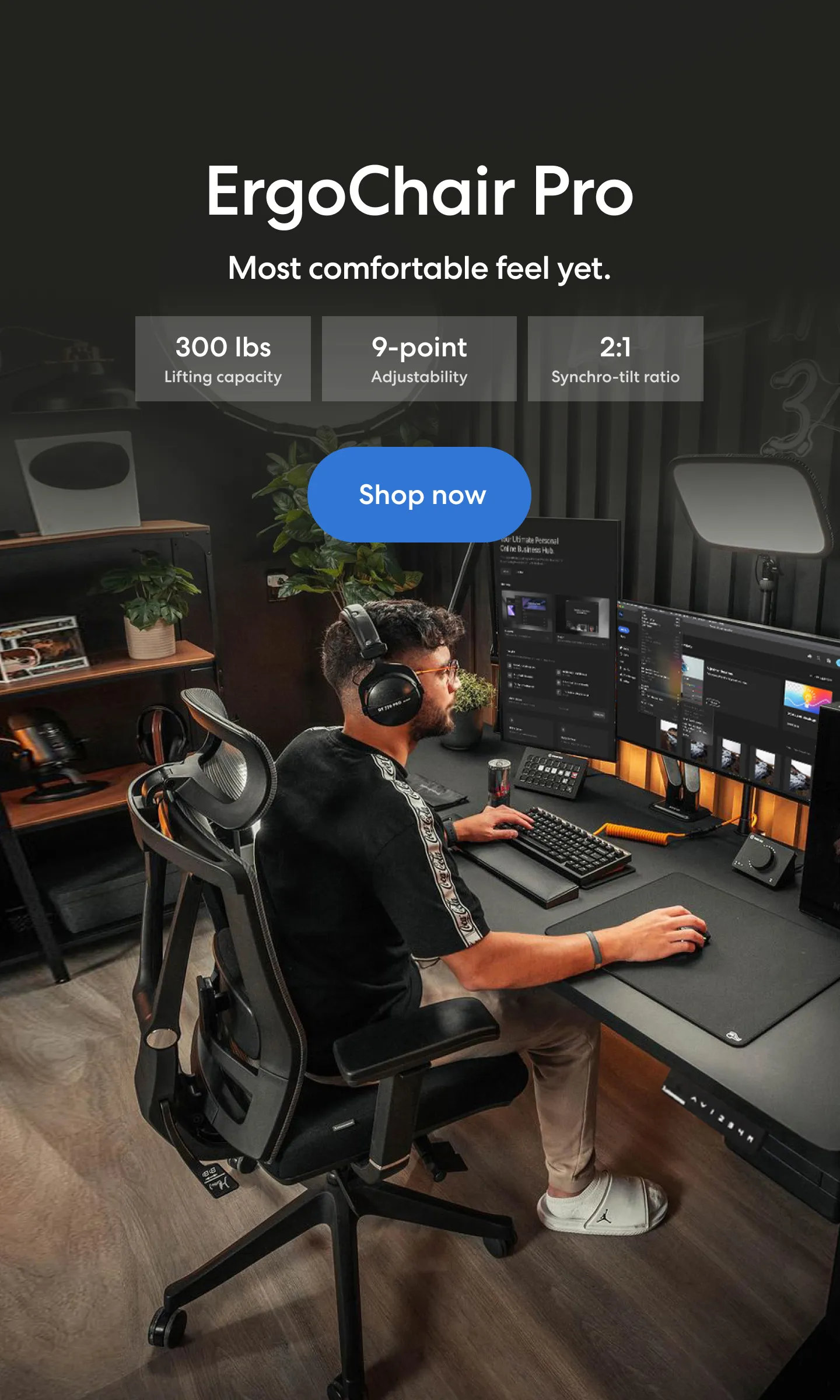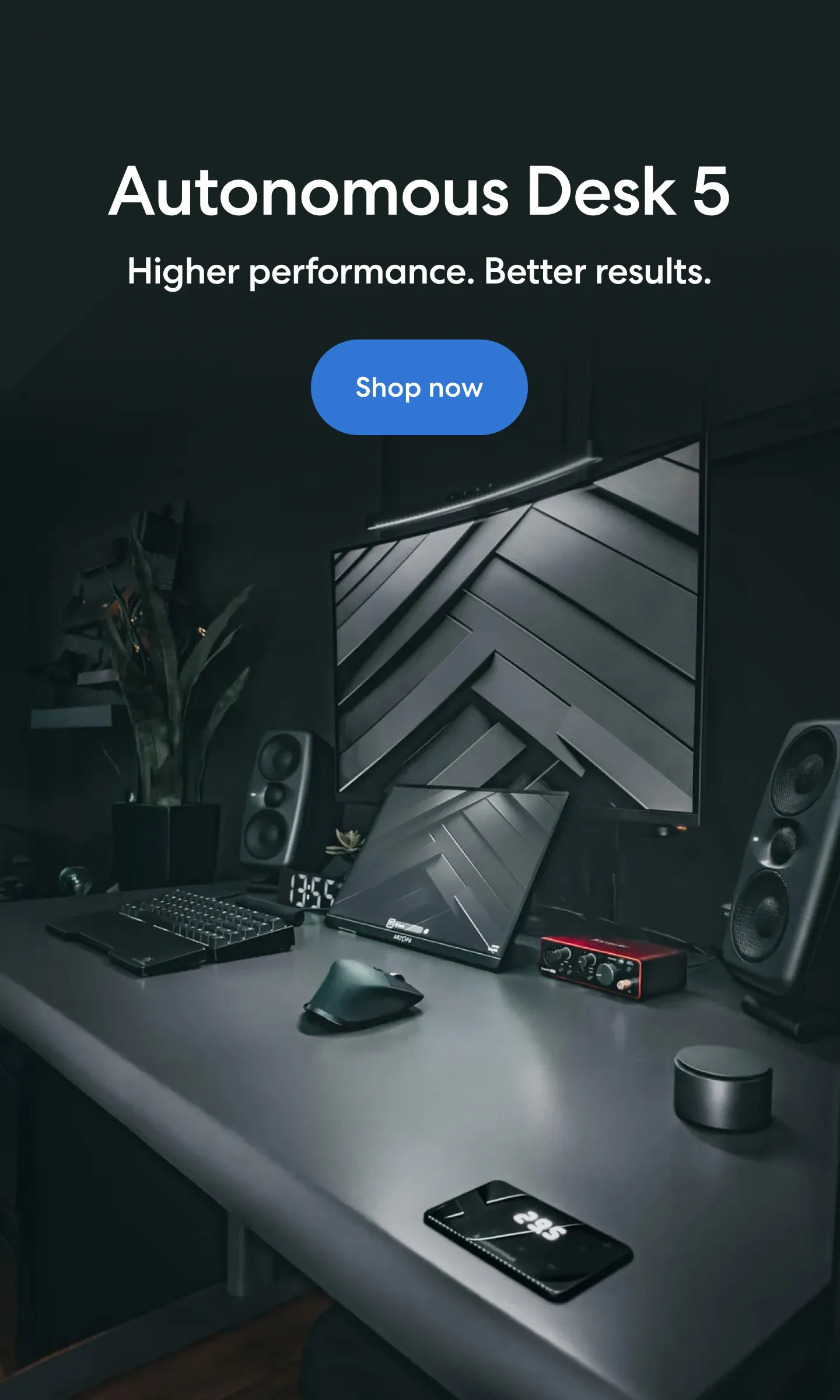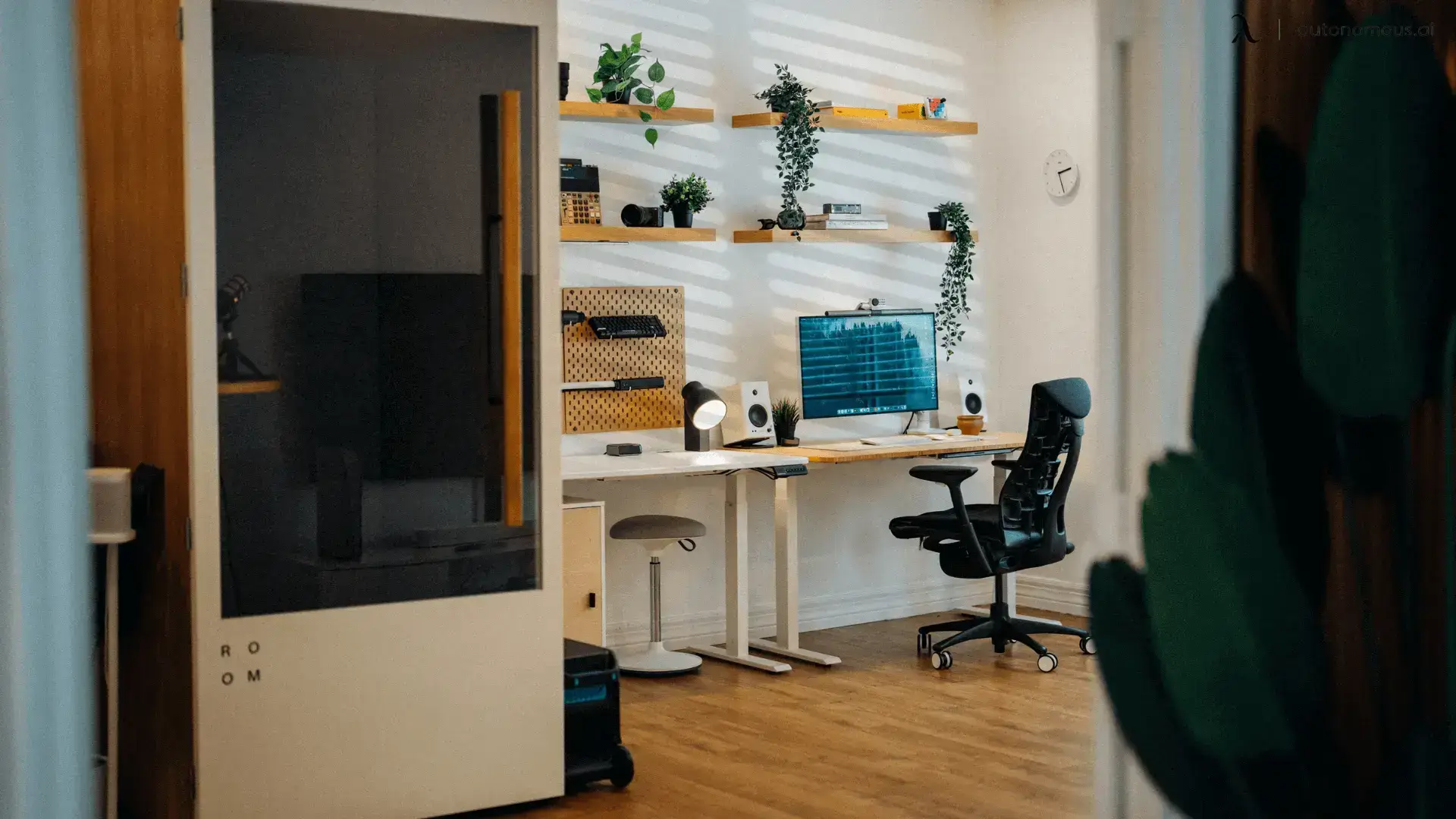
Home Office Decor Ideas That Totally Changed My Space
Table of Contents
- 1. Find Your Style First
- 2. Desk as the Core of the Room
- 3. Walls That Speak — More Than Just Backdrops
- 4. Light That Sets the Tone
- 5. Small Spaces with Big Personality
- 6. Minimalism & Modern Style Done Right
- 7. Her Space vs. His Space (and Everything in Between)
- 8. FAQs
- 9. Final Layer: Inspiration Over Perfection
A home office is more than a desk and a chair. It’s where ideas take shape, where you focus through long stretches of work, and often where creativity quietly lives. The way your space is designed can directly influence how productive and inspired you feel.
In recent years, more people have realized that home offices aren’t just about function — they’re about creating an environment that reflects your personality. A well-decorated workspace can make your day flow better, help you think clearer, and even make mundane tasks feel less heavy.
The best part is: decorating your office doesn’t require a massive budget or interior design skills. It’s about being intentional with colors, textures, furniture, and lighting to build a space that works with your rhythm, not against it.
This guide will walk you through practical and inspiring home office decor ideas that fit different spaces, personalities, and work styles — whether you’re working from a corner of your living room or a full dedicated office.
1. Find Your Style First
Before you buy a single piece of furniture or decor, take a step back and decide what kind of vibe you want your space to have. Defining your style early gives structure to every decision — from paint colors to furniture finishes — and makes the entire home office setup process smoother.
Here are a few styles that work beautifully for home offices:
- Modern: Clean lines, neutral tones, and sleek finishes — perfect if you love a crisp, uncluttered space.
- Contemporary: A warmer spin on modern, with softer lines and layered textures that create a welcoming feel.
- Cozy or Boho: Natural light, plants, woven materials, and warm tones that make your workspace feel lived-in and relaxed.
- Minimalist: Fewer but carefully chosen pieces, calm colors, and clear surfaces that keep the focus on simplicity.
- Classic or Vintage: Rich textures, warm wood, and statement pieces or antiques that give your space character and depth.
- Dark & Moody: If you love bold contrasts, deep tones and layered lighting create a dramatic, grounded look — think moody home office ideas or even a modern black home office.
- Bright & Airy: White walls and soft neutrals make everything feel open and clean, like a white home office.
Color is one of the fastest ways to lock in your style. If you’re unsure where to start, exploring the best colors for a home office can help you set the tone.
You might lean toward soft, warm, and layered touches or prefer structured, strong lines. Some people even blend two aesthetics — like modern-boho or minimalist with warm accents — for a more personal look. Once you’ve defined your foundation, every other design choice will feel more cohesive and intentional.
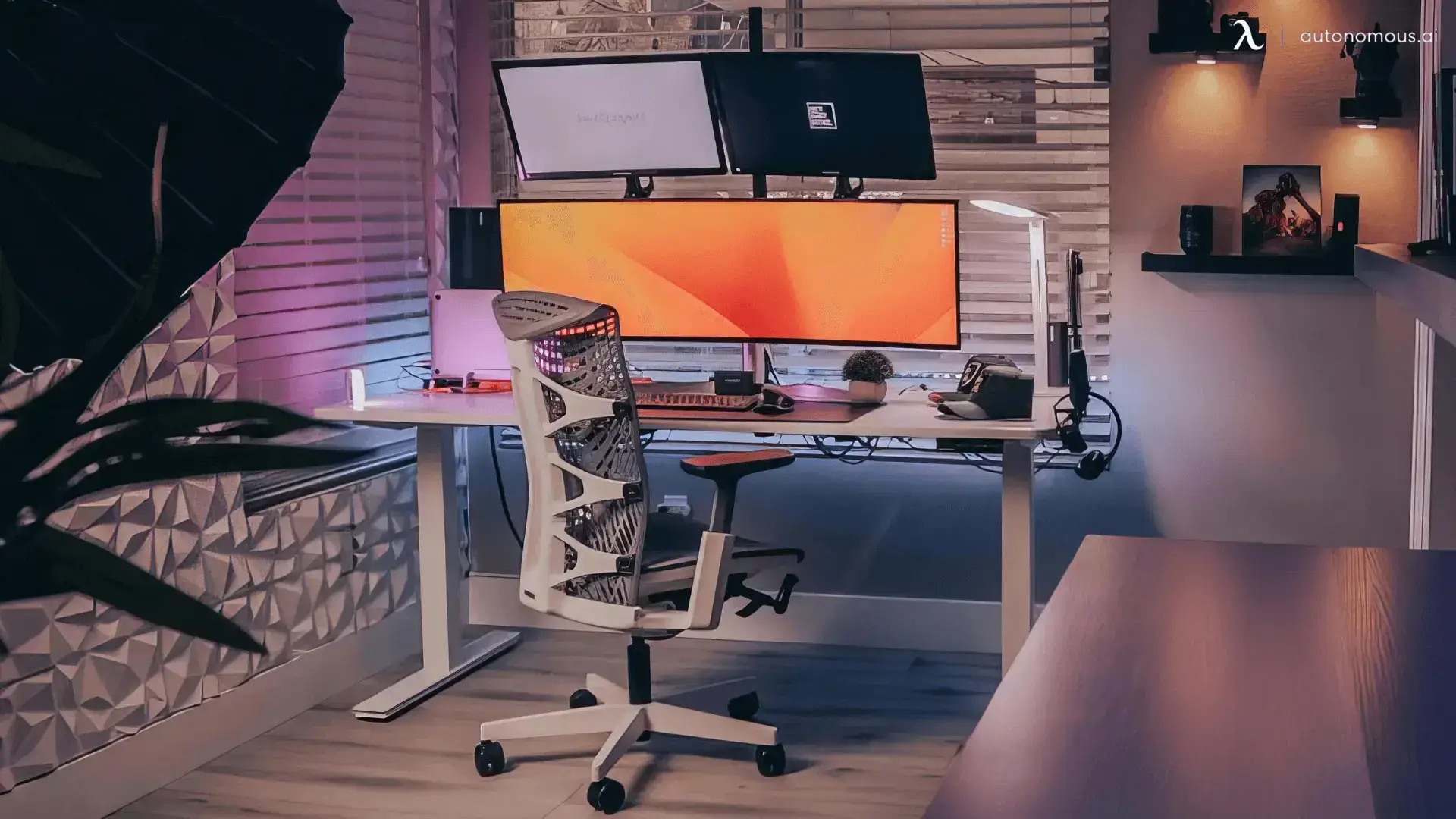
2. Desk as the Core of the Room
The desk is the centerpiece of your home office — it sets the tone for everything else. Think of it as your anchor point, both visually and functionally.
The ideal desk isn’t just about looks; it supports how you work. If you use multiple screens, a wide, stable surface gives you room to breathe. If your space is small, a slim desk or floating surface can create structure without crowding the room. Adjustable desks are great if you like changing posture throughout the day.
Placement can also shape the entire mood of your workspace. Some people love the focus of a desk in the middle of the room, while others prefer to keep their setup against a wall for a clean, structured feel. If you need extra surface area, a home office L-shape desk setup can give you more space without feeling crowded.
.webp)
For those who spend long hours at work, home office ideas with a standing desk can help with comfort and energy throughout the day. If you’re short on space or love a clean look, exploring built-in desk ideas for home offices is a smart move.
Once you’ve chosen your base, personalize it with intention:
- Keep the surface clear and uncluttered with only your essentials.
- Add a small plant for a natural touch.
- Use a good lamp to set the tone for late-night work sessions.
- Include one or two personal pieces — a framed photo, favorite notebook, or sculpture — to give your desk its own identity without crowding it.
A thoughtful desk layout isn’t just about design. It supports your focus, helps you move comfortably, and makes your home office feel truly yours.
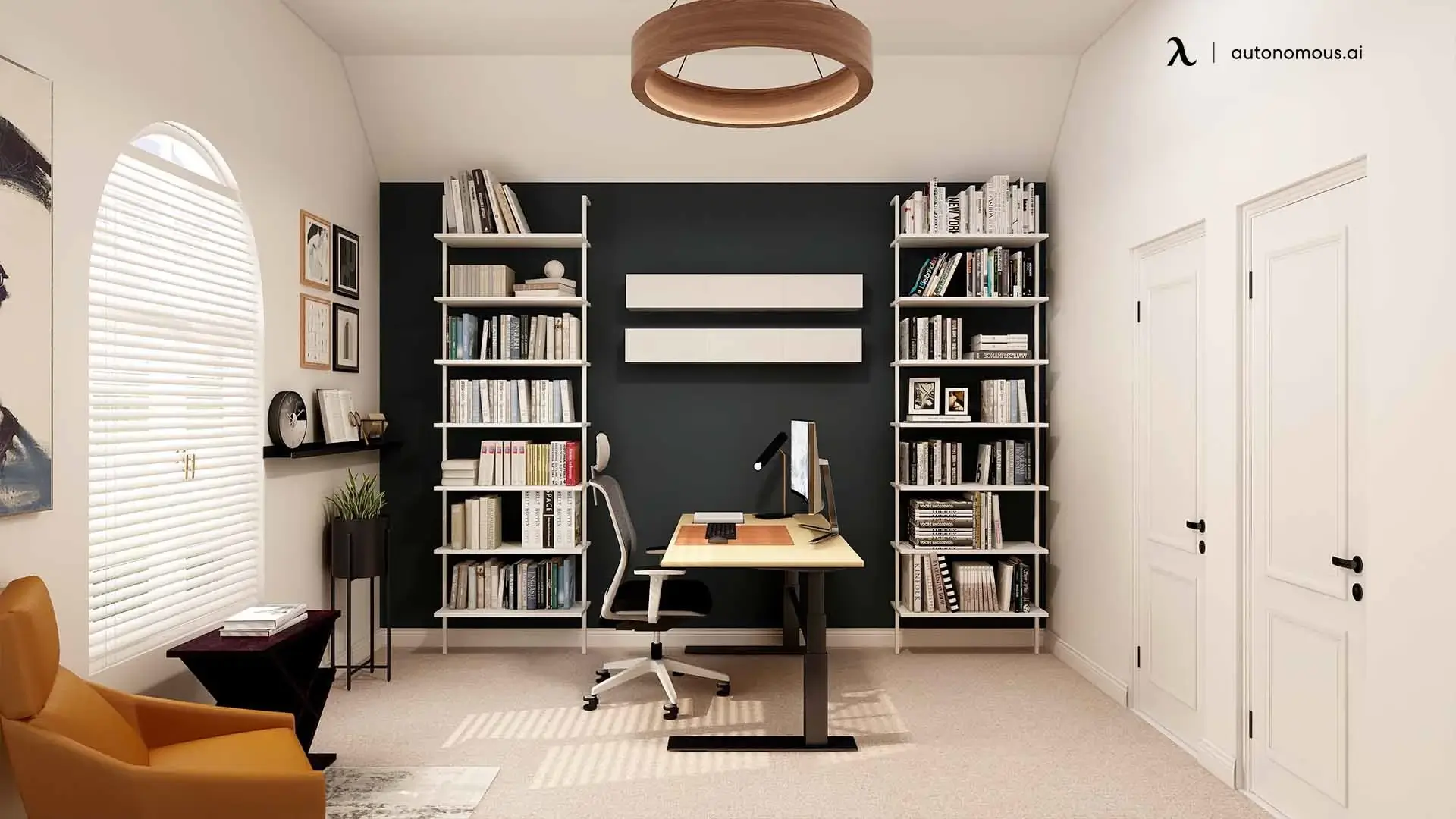
3. Walls That Speak — More Than Just Backdrops
Most people underestimate how much wall space can shape a room’s mood. Walls are more than just a backdrop — they’re part of your workspace’s personality. Thoughtful office wall decor can completely transform how a space feels and functions.
Think of your wall as a blank canvas you can use strategically:
- Gallery walls: A mix of framed art, prints, or quotes that inspire you.
- Floating shelves and organizers: Shelving is practical for storage and displaying books, plants, or decor. Mounting your monitor on the wall saves desk space and creates a sleek, modern look, while office wall storage ideas help keep everything accessible and organized.
- Pegboards or cork boards: Ideal for pinning ideas, reminders, or work-in-progress inspiration.
- Accent paint or wallpaper: One contrasting wall can create a visual anchor that makes your office feel styled without extra furniture. Home office wall colors can set the tone — soft hues for calm, deeper shades for bold impact.
- Wall lighting: Sconces or mounted lamps can free up desk space, add dimension, and create a cozy atmosphere.
A well-decorated wall adds depth, personality, and visual interest, making your workspace feel intentional. If your office is small, vertical elements like shelves or wall-mounted tools keep the floor open and the space feeling larger.

4. Light That Sets the Tone
Lighting can completely transform how a space feels. It’s not just about visibility — it’s about creating the right atmosphere for work, creativity, and comfort.
Start with natural light whenever possible. Positioning your desk near a window boosts energy and reduces eye strain. Then layer in lighting types that work together instead of competing with each other:
- Task lighting: Focused and bright, ideal for reading or deep work. A LED desk lamp can provide crisp, even lighting that reduces eye fatigue.
- Ambient lighting: Soft and warm, perfect for evenings or when you want a cozy, balanced vibe. If you’re deciding between soft white vs daylight, think about how you want your room to feel: soft light is calming, daylight is energizing.
- Accent lighting: Small lamps or light strips highlight decor and help create depth. Comparing lamps vs overhead lighting can help you find the right balance.
Color temperature matters more than people think. White vs yellow lighting affects focus, and soft white vs warm white can shift the room’s mood entirely. If you use a computer for long hours, proper lighting ergonomics can make your setup more comfortable.
Adding a statement floor lamp can bring dimension and warmth to the room, giving it a polished, layered look. A well-lit workspace feels more balanced, helping you stay focused during the day and relaxed after hours.
.webp)
5. Small Spaces with Big Personality
Not everyone has a full room to spare, but small spaces can be just as inspiring with the right strategy. The key isn’t size — it’s how you design for flow, not volume.
Smart planning can turn even a tight corner into a beautiful, efficient workspace. A few well-chosen elements can make a small home office feel intentional, polished, and surprisingly spacious.
- Rethink your layout: A small home office layout that prioritizes circulation keeps the space from feeling cramped. Pairing it with the right small home office chair ensures comfort without taking up unnecessary room.
- Play with function: If your workspace doubles as a lounge area, a home office with a couch layout gives flexibility for both work and downtime. A small home office library setup can also turn a corner into a cozy reading zone.
- Maximize space visually: Mirrors, vertical shelving, and lighter tones make rooms feel more open. If you’re curious what’s realistic, the average size of a home office can help you plan smartly.
- Create natural boundaries: Rugs, screens, or dividers can separate your work zone in shared rooms without needing walls.
- Use smart storage: Hidden drawers, modular cabinets, or compact shelving keep clutter tucked away. These small home office storage ideas make a huge difference in maintaining flow.
- Use design tricks to expand the room: Simple adjustments like lighting placement, clear surfaces, and scale can visually enlarge a space. Check out how to make a small office look bigger for practical tips.
- Bring in greenery: A few plants can add depth, freshness, and softness to tight spaces. Small home office with plants setups are simple but impactful.
The goal isn’t to make a small space look like something else — it’s to make it feel intentional, not temporary. A well-designed corner office can hold just as much personality as a full room.

6. Minimalism & Modern Style Done Right
Minimalism office decor isn’t about having nothing — it’s about being intentional with what you keep. A modern or minimalist home office focuses on clean lines, open space, and subtle design details that feel fresh, uncluttered, and easy to live with. This approach works best for people who value clarity, calm, and structure in their workspace.
The key is creating a deliberate environment, not an empty one:
- Choose a simple palette: A neutral or monochrome foundation brings a sense of calm and makes any space look more cohesive. It’s the base layer that sets the mood for minimalist office decor.
- Keep surfaces clear: A clean desk gives your mind room to breathe. A minimalist desk is perfect for achieving that crisp, airy feel without unnecessary bulk.
- Hide the mess: Use hidden storage or sleek furniture to maintain visual balance. The less visual noise, the more focused the space feels.
- Add just one or two statement pieces: A single lamp, art print, or plant can make the room feel personal and alive without creating clutter.
- Embrace minimalism beyond the desk: Even in shared or structured environments, minimalist cubicle decor can bring calm into busy spaces.
This style isn’t just about how the room looks — it’s about how it feels. A minimalist home office creates a light, structured, distraction-free space that helps your mind stay clear and focused.
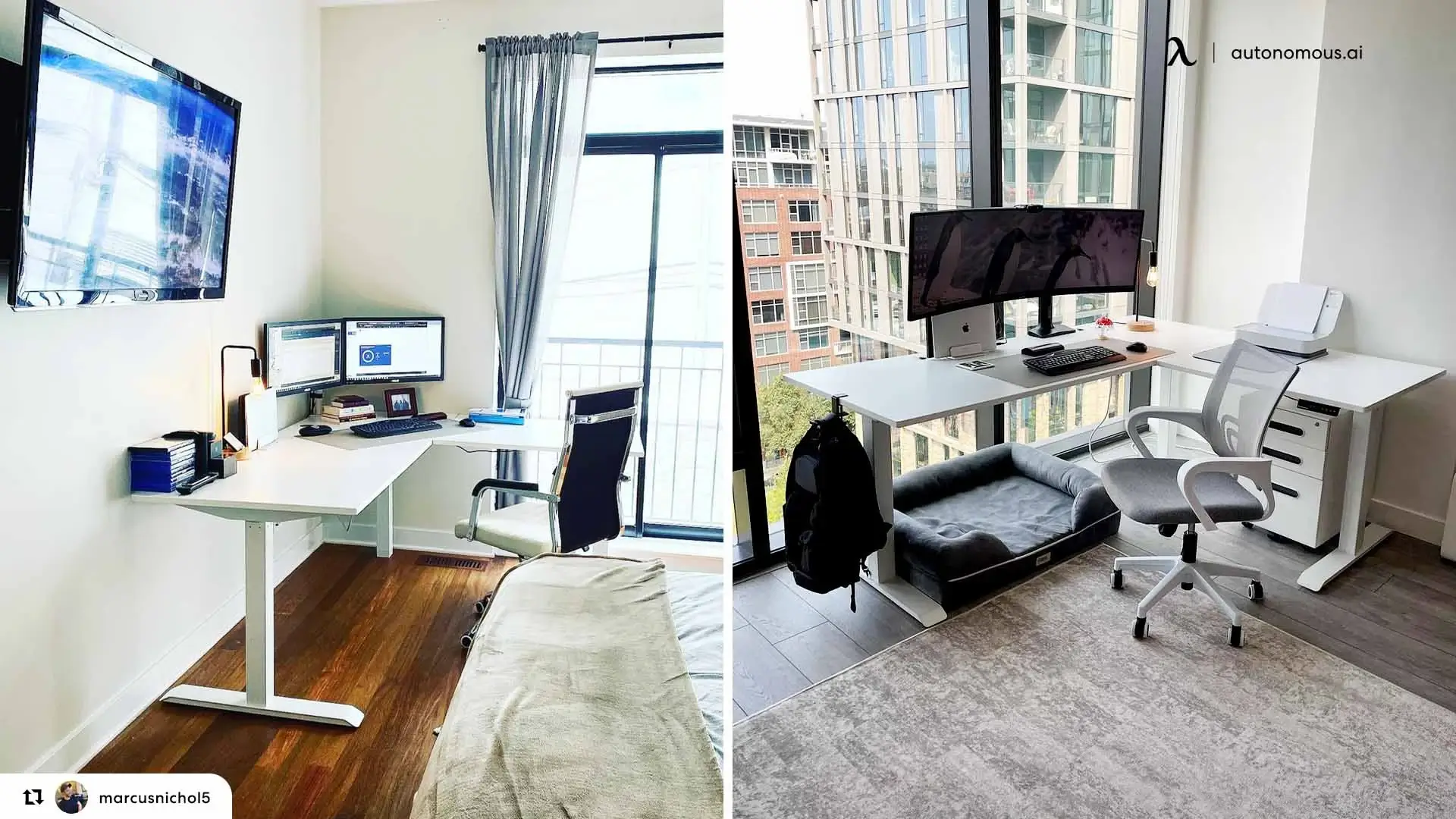
7. Her Space vs. His Space (and Everything in Between)
There’s no single formula for designing a home office. What makes a workspace truly personal is how it reflects your style and energy. Everyone approaches decor differently — some lean toward softer, cozier details, while others prefer strong, structured design.
Many people love spaces with gentle touches like warm lighting, pastel tones, layered fabrics, and greenery — elements often found in feminine home office ideas. On the other hand, others are drawn to clean lines, bold edges, dark woods, and metal finishes that align with masculine home office styles.
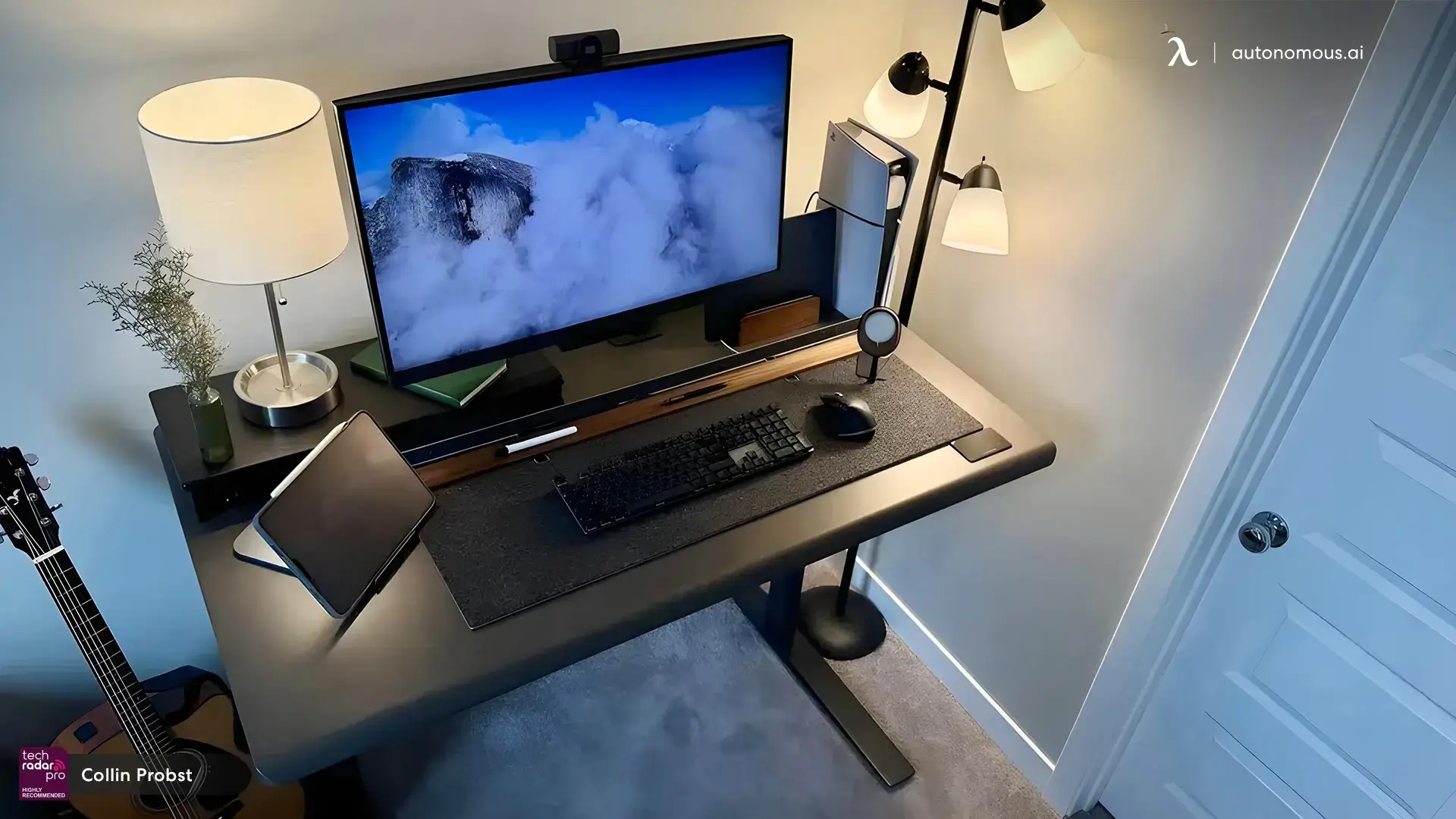
But these are just starting points, not rigid design rules. The most interesting offices often merge these approaches.
- A soft rug under a minimalist desk.
- A strong wood finish paired with a linen chair.
- Warm light softening structured furniture.
Blending masculine and feminine elements creates balance and gives your space a layered, lived-in character. It’s this combination — warmth and structure — that often feels the most authentic and timeless.
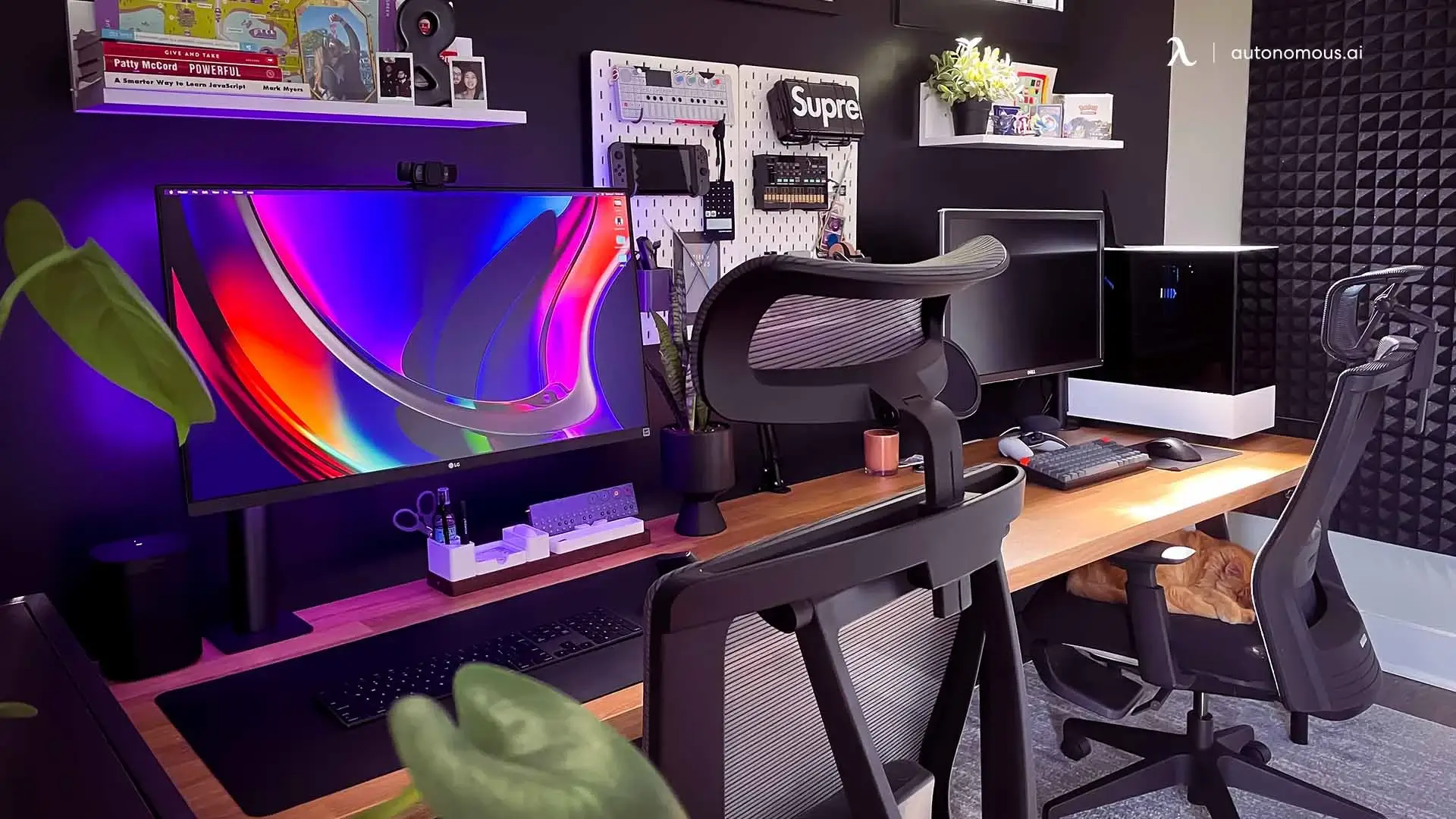
8. FAQs
How do I decorate my home office on a budget?
Start with lighting, wall accents, and small decor pieces. These elements make a big impact without requiring a full renovation.
What colors are best for a home office?
Neutral and soft colors work well for focus. Accent colors can add personality but should be used in moderation.
How can I make a small home office feel bigger?
Use vertical storage, mirrors, light colors, and minimal furniture. Keeping the floor space open helps create visual spaciousness.
What are some modern home office decor ideas?
Think clean lines, uncluttered surfaces, and a few statement pieces — like a sculptural lamp, elegant shelving, or a striking chair.
How can I make my home office more inspiring?
Add texture, meaningful personal items, good lighting, and natural elements like plants. These small touches can completely change the energy of a room.
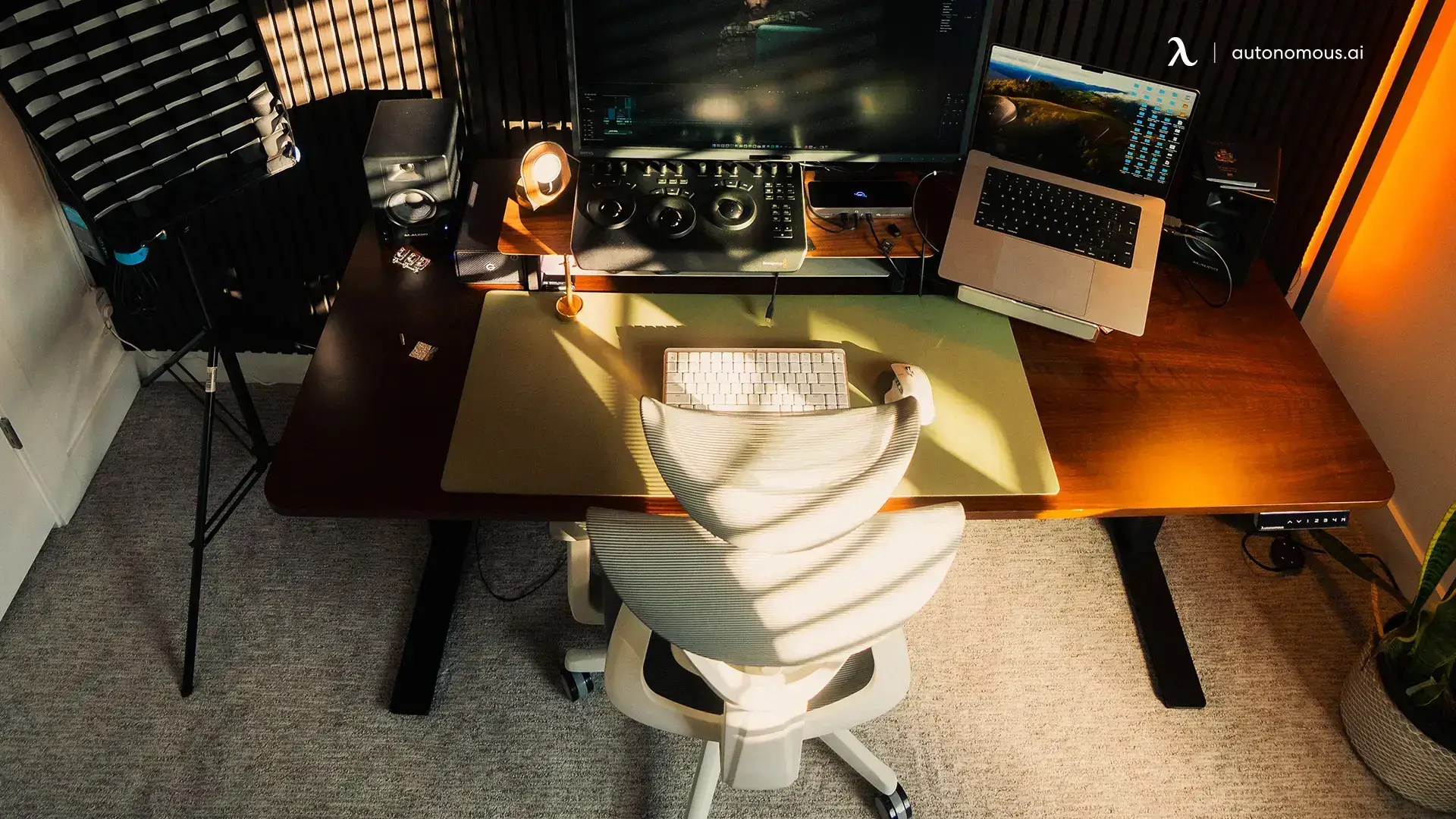
9. Final Layer: Inspiration Over Perfection
It’s easy to get caught up in Pinterest-worthy spaces, but a great home office doesn’t have to look like anyone else’s. The goal isn’t perfection — it’s creating an environment where you can actually enjoy working.
Your office should grow with you. Over time, you’ll move things around, add or remove decor, and slowly build a space that truly fits your habits and style. That’s what makes it yours.
The best home office decor ideas aren’t the ones you copy exactly — they’re the ones that give you a starting point to create your own vibe.
Spread the word
.svg)





